How I make money while traveling the world full-time: behind the scenes with a location independent writer
In just a couple weeks, I’ll be celebrating my seven-year anniversary of packing my bags, boarding a plane for Scotland, and taking to the road full-time with my fledgeling business and my pint-sized pooch.
It’ll probably come as no surprise when I say that the first question I get from people when they find out is a big, fat HOW?
How in the world do I afford to travel full-time?
That question is really two: first, how much does it cost to travel the world full-time (a question I try to answer by sharing my real budgets for monthly stays around the world)? And second, how do I make money while traveling?
Because the question is so common and lately more and more people have been asking for details, this post is the start of a new series here on the blog. Every month quarter, I’ll go behind the scenes of my business as a location-independent content strategist, writer, and entrepreneur, from the exciting to the mundane of it all.
Before I start talking about my digital business and where it’s landed as we near 2020, though, let’s talk about how I got here in the first place…


How I Quit My Job & Started My Business…Before I Hit the Road
You know all those “I quit my job to travel!” stories?
Mine isn’t actually one of them.
I quit my job long before the idea of full-time travel occurred to me. I quit because I was exhausted, burned out, depressed, and quite literally making myself sick.
You see, I was the sole copywriter, content strategist, social media strategist, and content/CMS support person at a small ad agency. I loved the work. I loved working with other creative people. I loved the rush of the ad business. But I had way too much on my plate.
So there I was in late 2010, “living the dream” in that I had a reasonably well-paid writing job, something I’d been told would never happen. But I was also coming into work at 6 or 7 in the morning, often not leaving until long after 5 (and sometimes as late as 10), sometimes stealing away for 10 minutes at lunchtime to sob in the parking lot because I was so utterly overworked.
After about three years in that job, enough was seriously enough. The last straw was the day that they fired the guy who’d been hired just a few short weeks previously to take on my overflow. The day they let him go (very literally that day), I started applying for other copywriting jobs and, quietly, not yet too seriously, toying with the idea of freelancing full-time.
A few days later, I was in my therapist’s office, agonizing over my options, laying out endless pros and cons, arguments for and against every possibility, when she asked me to stop, take a few breaths, and calm my mind.
Instead of pros and cons, she said, we were going to try an exercise. First, I’d bring myself to neutral. Breathe deep. Slow my heart rate. Still my mind. And then she’d say one of my options out loud and I’d ignore all the pros and cons, the logic, the arguments, and just notice how my body felt.
“Staying in your current job,” she said.
I felt instantly anxious, tight in the chest, panicked.
“Taking the new full-time job offer,” (I had one on the table at that time).
I felt sad, like I had failed. My heart dropped.
“Starting your own business,” she said.
And I felt as though a weight was lifted off my chest: light, excited, and nervous. I started to cry tears of relief.
It was clear that what my heart wanted was to take the freelance plunge.
With clarity about exactly what I wanted, the next step was to make a plan.
I didn’t feel ready to dive straight into full-time freelancing. I wanted to write a business plan. I wanted to have a year’s worth of expenses in the bank just in case it took a long time to become profitable. I wanted to set up a new website, to start getting the word out.
But I also knew that I didn’t have time to do any of those things if I stayed at the ad agency working such brutal hours. So, about two weeks after they fired the guy hired to help me, I handed in my notice. Two weeks after that, I started my new full-time gig.
You see, I had taken the other full-time job offer after all, for a copywriting job at a national homebuilder. The hours were far more predictable and reasonable. The work was easy. The pay was a little higher. And with evenings, mornings, lunchtimes, and weekends now freed up, I’d have time to write that business plan, set up my new business website, and start picking up clients on the side.
I told myself that I was allowed to quit and freelance full-time when I either had enough in the bank to live for a full year with no income or had so many side clients that I couldn’t take on more without quitting.
The second thing happened a little before the first and about five months after starting at the homebuilder, I gave my notice and started freelancing full-time.
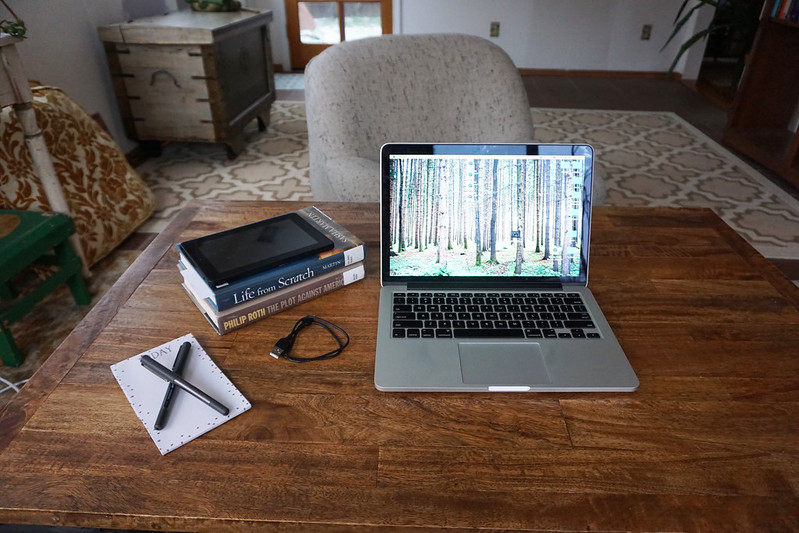
Year One in my Freelance Business: Living in Denver & Deciding to Travel
I left my corporate gig in April 2011 and the first few months of being self-employed were strange ones.
I was used to working crazy hours, first at the ad agency and then working regular hours at my corporate job but filling all my free time with freelance clients and business plans and website building. Suddenly, though, I dropped from probably 60- to 80-hour weeks to 15 to 20.
The relief in my body was enormous and instantaneous, though I was simultaneously nerve-wracked to have so much empty space in my schedule.
The first few months were like that: full of business-building, yes, but also free time. I started reading books again. I went on dates. I wrote for fun again. And as time went on, I built up a client list and worked regularly with a handful of ad agencies, universities, and health companies.
This is probably a good spot to stop and explain, for those who aren’t familiar with the terms, what a copywriter and content strategist is.
Essentially, copywriters write marketing content (everything from websites to billboards, email newsletters to product tear-sheets, video scripts to brand taglines) while content strategists help businesses develop strategy for their content (answering everything from “what kind of content – words, images, video, etc. – does our business need?” to “who will read/watch/download this and what do they want/need to get from it?” to “how should I structure the content to meet my business goals and best serve my audience?”).
Both of those definitions are something of an oversimplification, but hopefully they give you an idea of the work I was doing at the ad agency, then the corporate job, and then as a freelancer.
As the months rolled by, I wrote health Q&A, developed website and social media content for universities, and worked on both strategy and copywriting projects with my old ad agency, who I’d maintained a good relationship with even as I left.
I was charging around $50 per hour (though I took on some projects as low as $25) and by the end of the first year I had three or four consistent clients with varying workloads. As I remember it, that first year I made almost as much money as I’d been making as a full-time employee.
In the meantime, I started to feel restless.
I was still struggling with the ill effects of overworking myself. I was still depressed. I was still regularly crying my eyes out in therapy. The long hours weren’t the only thing keeping me struggling and sick.
Which is when the idea of leaving started to take hold.
Travel, movement, change had always been positive things in my life. They shook me up, made me reevaluate, forced me to reset old bad habits. And I started to wonder if a change of scenery might do me good again, might help me climb out of the depression that I’d been struggling with, might help me stop feeling so lost.
I discussed the idea with my therapist and we went through that same decision-making process – her saying an option, me noticing my body’s reaction. At the end of the session, it was utterly clear that my next step was to find a way to get myself to Europe.
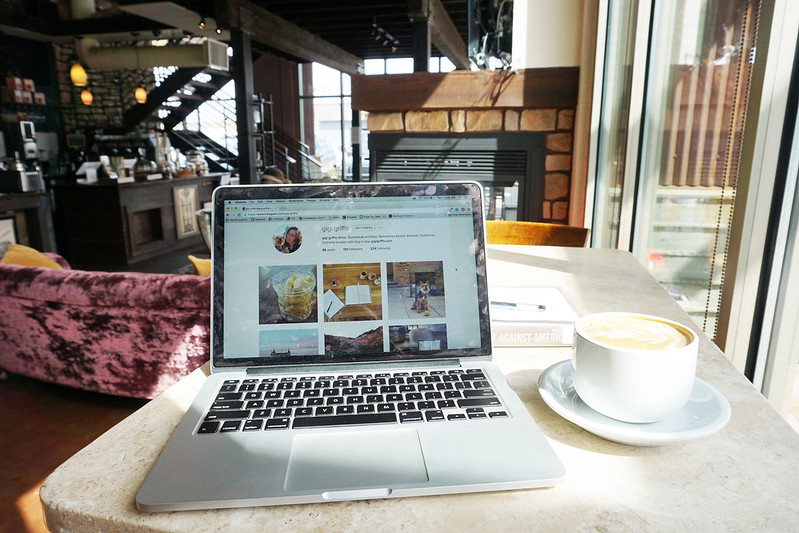
2012 & 2013: On the Road as a Copywriter & Content Strategist
In May 2012, after months of planning, I gave up my lease and trekked to the airport with my hiking backpack, a carry-on, and Luna and boarded a plane and then train bound for Edinburgh, Scotland, the first stop on my indefinite nomadic journey.
For the first few months of traveling full-time, I only planned a month in advance, giving myself permission to turn tail and fly back to Denver if I started losing clients or if I figured out somewhere along the way that this lifestyle wasn’t for me.
Of course, that didn’t happen.
Even though I spent about half of my time in Edinburgh battling a nasty infection, even though I had to do client calls at later hours than I preferred, even though jet lag sucks and so do long plane rides, I was exhilarated, relieved. I felt like I could finally breathe. And after a few months, I knew that this lifestyle wasn’t just a whim or a short-term thing.
As I adjusted to time zone changes and Scottish weather, I kept working on my content strategy and copywriting projects.
I picked up new clients. I went to a big content strategy conference for the second time. I was hired to write about content strategy and content marketing. I landed a gig with a firm I’d been admiring for years.
And as 2013 started to draw to a close, I was feeling fairly comfortable and confident. I’d at least broken even on my expenses every year, probably mostly because I waited until I already had some clients before I quit my full-time job. But my income had steadied more and more each year and after a few years of making it work, continuing to make it work starts to feel less like a dream and more like a reality.
Ironically, just as things started to feel comfortable, I decided to take another leap…
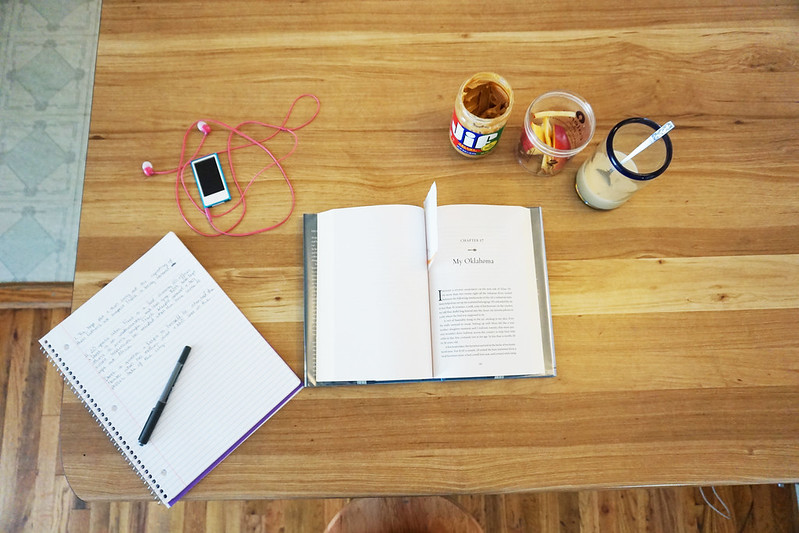
Late-2013 to 2014: Pursuing Childhood Dreams & Passive Income
During a month-long vacation (the first time I’d taken any real time off since starting my freelance business) in September 2013, I spent a little time looking back at those first few years of freelancing and asking myself questions like What do you want to do moving forward?
You see, on the side somewhere along the way, I’d started occasionally submitting travel stories to magazines and websites – and having good success getting the magazines to publish them. So while I was hiking the Alps that September, I also took some time to let myself wonder: Could I maybe be a full-time travel writer?
I thought the answer might be yes.
And so I returned to work in October 2013 and shifted my business in a big way. I gave myself one year to try and make a living as a travel writer. If it wasn’t working by then, I’d take on copywriting and content strategy clients again.
I also decided to move to Switzerland, to a little valley I’d fallen seriously in love with.
So the last part of 2013 was dedicated to these shifts. I started my application process for Swiss residency. I wrote a book proposal for a non-fiction book about taking chances and living life to the fullest, which I didn’t end up taking beyond the proposal stage (but might still someday). I pitched more travel pieces to the magazines I was already working with and started reaching out to others. And somewhere along the way I stumbled upon the idea of writing a travel guide.
The idea happened, as most ideas do, a bit at a time.
First, it came to me as a new blog series: my best travel experiences had almost all come from the recommendations of locals. And so wouldn’t it be wonderful to start interviewing locals all over Europe to get the insider scoop on dishes to try, restaurants to eat in, hiking trails, attractions, quirky museums…and, just as importantly, cultural faux pas to avoid?
I started by interviewing a colleague in Verona, Italy, about her town–and her answers blew me away.
I’d been to Verona and hadn’t seen half the things she mentioned. Because of that interview, I booked a trip. I simply had to go back. And I knew that if the interview inspired me that much, there must be other people who felt the same way. Suddenly an interview series on the blog wasn’t enough. I knew this had to be a bigger project.
And so I expanded it into a book. I’d interview 100 people who lived all over Italy and turn it into a full-length travel guide.
I worked feverishly, collecting interviews, translating, formatting, converting to e-Book. About six months later, in May 2014, I published the book.
Sales started relatively slow. In June, I sold about 60 books; July around 20. But as the months went by, sales started to climb bit by bit.
In the meantime, I knew I wanted 100 Locals to be a series. So I took on three mini-guide projects for Paris, Barcelona, and Prague. 10 interviews each. I published them one right after the other in August and September. And as the holidays started to approach, sales continued to grow. By early 2015, sales were averaging between 150 and 200 books per month.
Of course, I couldn’t afford to dedicate all my time to the books. I was still writing for magazines and websites. The first print magazine that ever published my work asked me to be a foreign correspondent, which meant guaranteed monthly work and income. A couple websites also started regularly publishing my stuff, though the pay was too low to be more than a supplement to my other work.
I felt elated at the possibility that my childhood dream job just might work out.
Still, though, Switzerland is a rather expensive place to live. And feeling a little financially stressed, when an old copywriting client contacted me mid-year to ask if I could take on a big website project, I said yes. At least in part, it was this project–a big website re-write–that made me feel secure enough to keep on keeping on as the year drew to a close.
By the end of 2014, I wasn’t quite breaking even, but things felt promising.
Book sales were climbing slowly but seemingly surely. I had my consistent magazine client. And if I could just get a few others, I could push my income reliably above the break-even point, I thought.
So I gave myself another year.
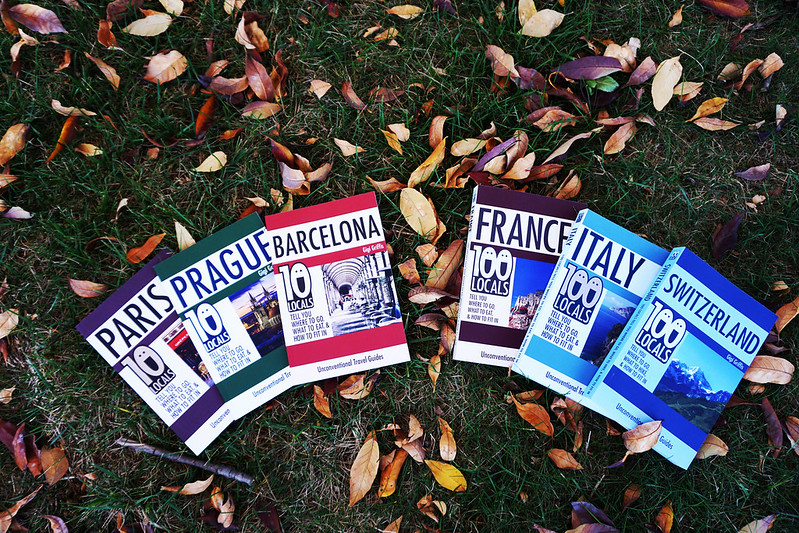
2015: My Second Year as a Full-Time Travel Writer
In 2015, I started a business journal to keep track of income, marketing efforts, and shifts in my business thinking.
According to that journal, early in the year about 60% of my income was coming from book sales and Amazon affiliate sales here on the blog (with affiliate sales making up very little of that larger percentage, but difficult to split out because the deposits both come from Amazon), while about 40% came from articles I wrote for magazines and online publications. Book sales had, to my delight, basically doubled overnight.
Still, I had my doubts that year, writing in the business journal:
“One of the hardest things about business, at least for me, is feeling like it isn’t moving fast enough. You work your butt off and you can’t always see the progress. The first year or two in business can be like walking through a desert. You might well be making amazing progress, but it’s hard to see that progress, hard to chart it on a day to day basis. I was feeling that way this week…feeling discouraged, afraid. Because what if I pour two years of my life into these books and find out that they aren’t going to support me like I think they will?”
A few months into the year, my income sources flipped. Book sales stayed pretty steady, making me enough to cover about 50% of my living expenses, but freelance income rose, making it 60+% of my total income. By May, as both income streams rose, I started to feel confident. I was genuinely starting to break even on a regular basis.
Now, there was certainly a caveat.
I’d gone from working pretty normal hours as a copywriter and content strategist to working long hours, nights, and weekends on the book projects. As I wrote in the business journal:
“It looks like I hit the break-even point at about a year and a quarter into the business. Keep in mind that is 14ish months of working almost every day, including weekends, not taking any real vacation time, and having several burnouts along the way. But it worked. I’m here, sustainably building toward profitability bit by bit.”
Starting to see my income stabilize was a great feeling. But I was also starting to feel burned out from working so long and hard and from the realization that some of my book income was the result of lucky guesses.
Certainly, I had a good idea, people loved the books, they got great reviews, I worked hard to market them…but after publishing two more guides in summer 2014, I realized that a big part of what made them successful was picking the right place to feature.
While Italy and Barcelona flew off the digital shelves, my Prague guide limped along, selling very few copies. When Switzerland came out, it outsold even the Italy guide (quite a feat). But when my France guide came out, after months and months of labor, despite France being the most popular tourist destination in the world that year, it barely sold at all.
It was horribly discouraging—putting so much time, care, and energy into a project and watching as it sat quietly, barely noticed despite my marketing efforts.
I also started to feel frustrated with Amazon.com. It was the #1 place my books sold and taking them off the platform wasn’t an option unless I wanted to basically eliminate them as an income stream. But Amazon takes 65% of my profits on eBooks. That’s right, 65%.
It’s way way too much. But this is what happens when you essentially have a monopoly on the market. They can take whatever they want and nobody, myself included, will pull our books, because that’s where everyone shops.
These frustrations were top of mind when I took my second real vacation as a freelancer and spent a month cycling across France.
As usually happens for me when I take a good long vacation, I came back with some clarity.
I didn’t have to support myself on travel writing and books alone. Life isn’t all or nothing, pass or fail. If I was feeling discouraged about the books, I could go back to content strategy and copywriting—or, perhaps even better, I could do a combination of things. Change isn’t failure. Shifting course is part of the journey.
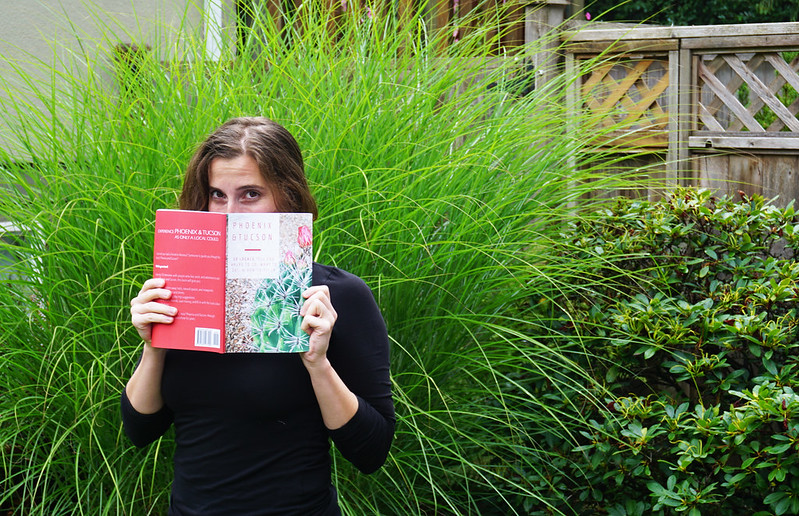
2016: The Slow Road to the Middle Ground
In 2016, I made a commitment to myself to prioritize my health and reduce my stress levels. This meant finally going to a physiotherapist about a frequently irritated shoulder injury from several years ago, getting psychologically re-evaluated, and, very importantly, reducing my working hours—by a lot.
I started my year with four months in Flagstaff, Arizona, where my best friend lives, and I worked about 25 hours per week. Though I still intended to publish several travel guides in 2016, I planned a much slower publishing schedule. I started to diversify my income again, taking on small consulting clients at first, then bigger projects. And I gave myself some time to work on fiction, just for fun, about once a week.
Those first four months of 2016 were vital and healing. I finally got the rogue recurring symptoms from my mystery Malta illness under control. I went on anti-depressants. I got more sunshine. I spent more time with people.
I made enough to live, but didn’t overwork myself. And as the year went on, now open to more possibilities and quietly pursuing copywriting and content strategy opportunities again, I connected with an amazing content marketing agency that sent me regular work, published five more mini 100 Locals guides, and took on several new consulting clients.
I also finally sat down and did the math on my books.
The very nature of book writing is that you accept all the risk up front and don’t know for quite a long time whether or not that risk is really paying off. Now that at least a few of the books had been out for a couple years, I figured I finally had enough data to see whether the financials were worth it.
So I took my estimated hours per book (estimated because I didn’t do a great job of tracking them exactly, but I do have a reasonably good idea of the time I spent) and the income I’d made from book sales since they came out and I figured out that, as of early 2016, the books had paid me back between $15 and $50 per hour for my time.
Not a bad figure, but not a great one either when you consider that the other work I do, with 15 years of professional web and copywriting experience under my belt, ranges from $75 to $100 per hour.
In those figures lies a question: What’s most important to me in my work life?
Would I rather work twice as many hours, but do that work on personal passion projects, or would I rather work half the time on other people’s projects and leave more time open for whatever it is I want to do – be it writing or work projects or just dancing, hiking, exploring, and pursuing hobbies?
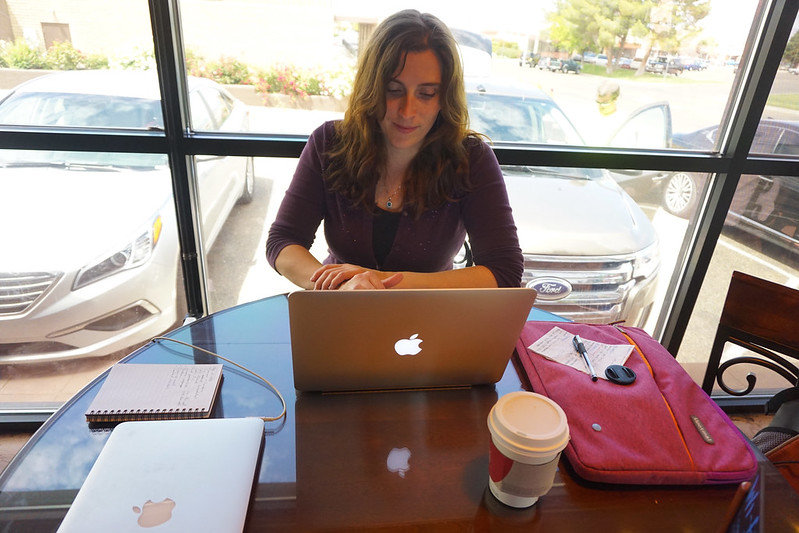
2017 & 2018: Defining New Terms for my Work Life
And so, as 2017 began, I answered the question by circling back around to my values. As the year opened up, what was most important to me in my work life?
The answer at that moment was this: I wanted low-stress, flexible, reliable work from relaxed clients with reasonable deadlines. I wanted to continue to work less hours and do work valued at a higher rate.
Somewhere along the way, I’d gotten the idea that the things I love most must be the way I earn money. That would be the only fulfilling path. But after a 2016 focused on health and wellness and making space in my schedule, I realized that this just isn’t true for me.
I like content strategy and copywriting. I’m good at it. It pays well. And it frees me up so that I can spend my free time writing my first novel or exploring a new city or spending a whole Friday reading in the sunshine.
And while it might be lovely to get paid to read in the sunshine on a Friday or walk the walls of Dubrovnik or put the finishing touches on my fictional dystopian world, I don’t need to be paid for those things. I don’t need to turn them into work. I don’t need to be a full-time travel writer or book author or whatever other glamorized ideal I’ve got tucked away in my mind.
Instead, I can pour my heart into 15 – 20 hours worth of writing and strategy work each week and then the rest of my time will be my own.
And so 2017 dawned and I quietly finished the first draft of my first novel manuscript (which I wrote for me, regardless of whether it ever makes me any real income) and publicly announced the shift in my business, inviting prospective copywriting and content strategy clients to get in touch.
I launched a new business website. I scheduled two calls with prospective long-term clients, one a content strategy agency, the other a cool non-profit. And I offered website audits on Facebook, picking up another small client that very day.
And then, slowly, over the course of the next two years, I started letting go of lower-paying projects like the travel guides and travel writing, and prioritizing high-paying, low-stress clients (tech startups and, ironically, ad agencies).
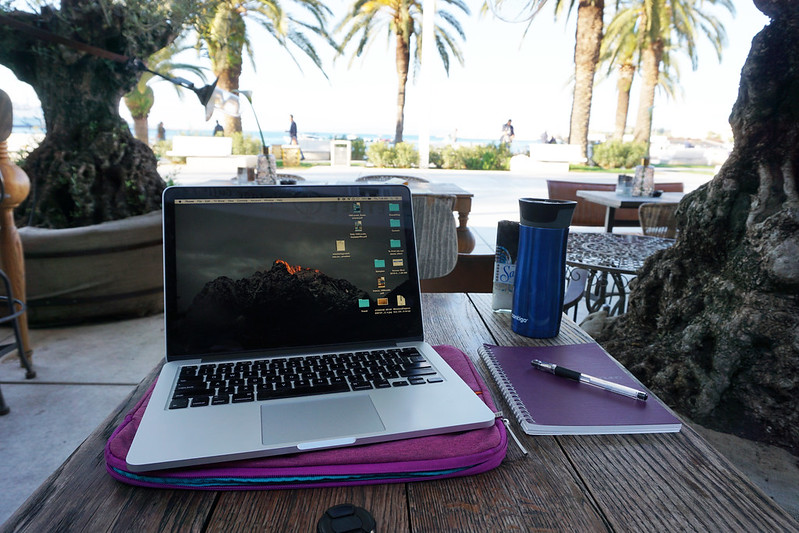
2019: Higher Income; Lower Stress
In early 2019, I finally broke through some sort of freelance wall.
After years of slightly shifting course over and over again, I’d finally stabilized. I was charging higher rates ($100 per hour). I had a healthy pipeline of prospective clients and started frequently turning down work that wasn’t quite right for my goals. I had built up good long-term relationships with tech and agency clients I loved.
By the end of the first quarter, it was clear that, barring a disaster, I was on track to hit my first six-figure year.
I had also somehow managed to do all this while molding my work life into something lower stress.
Working less hours and taking on only a few clients at a time means that I can serve them all quickly and make them all feel like a priority while also not running myself into the ground.
Working in an industry like tech, which tends to be well funded and have a longer learning curve for writers, means better pay and more stability in my client base. It also means a constant flow of challenging, interesting projects that force me (happily) to be constantly learning.
Capitalizing on my depth of tech experience has also put me in higher demand. I’m turning down projects frequently now and hanging onto the clients who are the best personality fits for me.
Instead of hustling to get the business to where I want it to be, I’ve started truly looking toward the future, running the numbers on retirement, setting even more aggressive savings goals, truly letting go of the anxiety I had about trying to force my passion projects to support me.
They don’t need to.
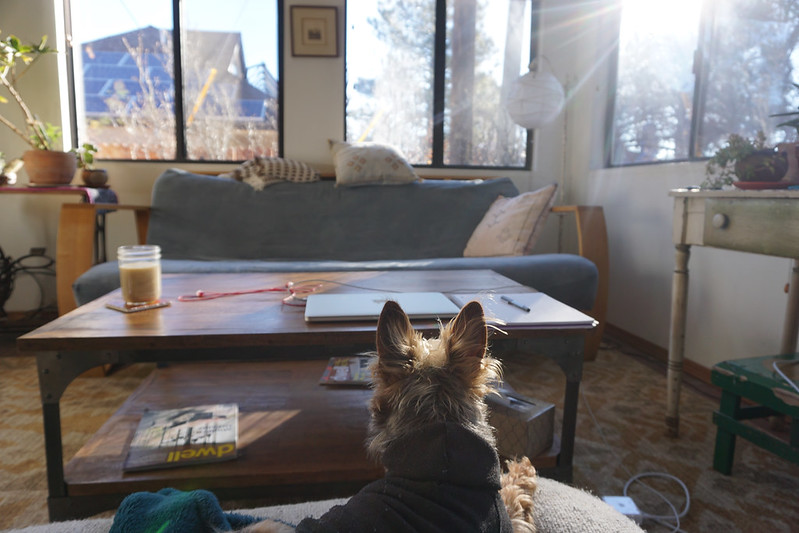
This is the story of the journey so far. Stay tuned (via email or RSS) for a quarterly update on how the business shifts, what income streams I pursue, and what other unexpected joys or roadblocks I hit along the way.
Monthly & Quarterly Breakdowns:
2018 in review (I saved almost 50% of my income!)
Still have questions? Toss them in the comments or join my email list to get twice weekly blog posts in your inbox.
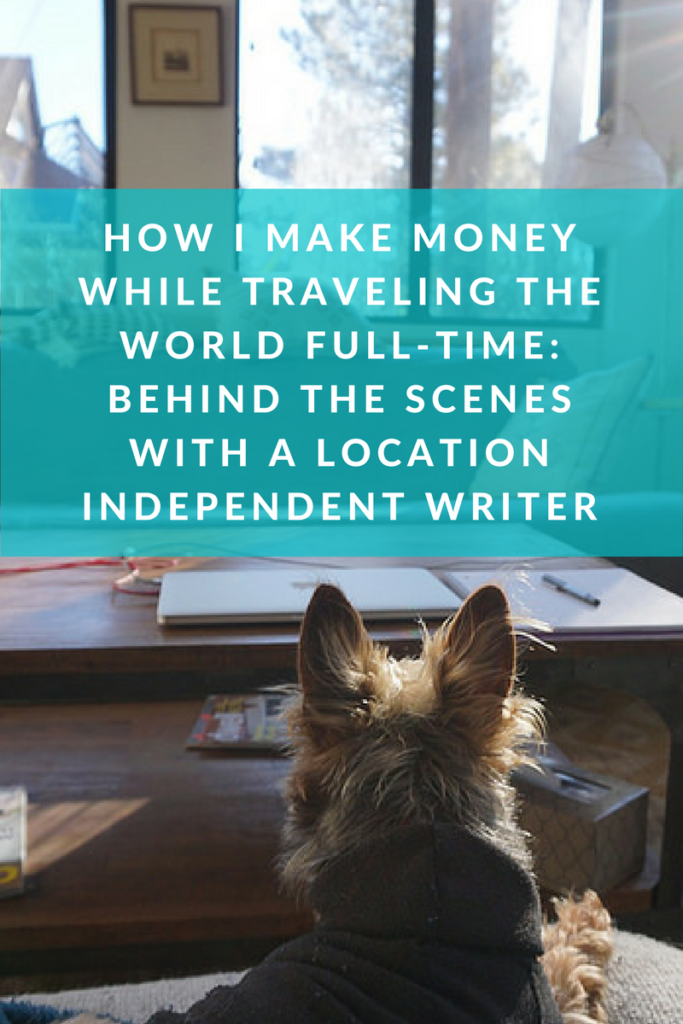
P.S. Need a writer or content strategist? I’d love to chat.
Comments
-
-
Georgette
Great read Gigi! This is very helpful for anyone who is looking to take the plunge when working for themselves and it’s great when we are quite honest about what we do to make money. I know from my personal experience that you have to do what you love, but you also need a bit of a nitch. I know for me content strategy and social media consultation was the right idea because I like doing it anyway, why not make it a full-time gig and voila, you have something to focus! Word of mouth is key when it comes to consulting, happy customers recommend their friends and it works both digitally and non digitally. While I hate the word “network” what IS actually useful is community. Being involved, giving without expecting to “get” which inadvertedly helps you out on the work front too. I have no doubt that 2017 for you Gigi is going to rock!
-
Hillary
Thank you, Gigi, for sharing your story. I look forward to reading more of it! This is inspiring and as one who also works in content strategy/Web building, social media, etc., I really enjoy the journey you’ve been on and how you’ve arrived where you are today.
-
Steven White
God damn this was a good piece. Great story, loved it. I’m incredibly inspired by your experiences as well, as my intention is to travel to Thailand soon to do the whole digital nomad deal as a blogger/business content writer/strategist. My income is an approx. 2k per month right now, and I have the business background to make sure I don’t starve/find enough clients.
I have been pondering the idea of travel writing, but haven’t been sure of whether it is something that will pay me in the long term. Ideally, I would like to follow a similar path as yours by writing some travel related books (or freelance related books).
I’m going to bookmark this and share it with people who have a similar mindset, probably the best article of this type I’ve ever read, so informative. Thanks again. Sorry if I seem like a fanboy, I am.
-
G.G.
This was a groovy read. A fun tale to be told, and some nice lessons to be learned.
Thanks for the and keeping it “real”.
“I started a new gig”…… that phrase was there a couple times….. Started a new Gig(i)?
Gracias y Salud -
Karin
Hi Gigi
Thanks for the information! I’ve been miserable in my full-time office job; it’s a job I’m not happy about and work there solely for the paychecks. That’s not healthy and it’s a monkey wrench thrown into my dream of traveling and writing. Traveling and writing full-time is a dream come true for me! I have been making contacts and doing my research.
-
Jen
Thank you so much for putting together this honest and comprehensive guide detailing how exactly you make money while traveling. We’ve been on the road for two years now, making a bit of passive income and money from articles I write now and then.
We’ve put soooooo much effort into our blog, and we’re starting to wonder, for what? It doesn’t make any money. We’re super niche (adventure travel with dogs) and it takes up so much time. I love it though, is the thing. But we also realistic and know that bloggers never really truly make money off their blog and so are figuring out how to diversify.
I appreciate you being candid with sharing that you chose copywriting, something you enjoy, but not necessarily aligns with your passion over pouring all of your energy into your projects that take up all of your time. Working while traveling is not easy! Everyone thinks we’re on this permanent vacation, but it’s not so! Ha!
-
Leo Tat
Gigi, I like your post, good insight on how you manage to travel around.
I have been making a living online since 2010, but it was not until last year when we visited Thailand that we considered moving abroad. Since we have two kids, we have not considered moving because of complications such as education, etc..
But now I have been searching the net, finding out more and more about location independence (plenty of digital nomad posts and youtube vlogs).
What interests me is how you can keep traveling with your dog. How do you get the dog on the plane, how do you get pet-friendly accommodation? I have a ragdoll cat which I have thought I would need to give away until I read your post. Any tips or can you point me in the right direction?
-
Leo Tat
Wow, thanks for the quick reply GiGi. Very useful links. I’m going to investigate further, I feel more confident about it now.
-
Dora
Hi!
Very inspiring, just found your blog. I have been stumbling across living off of copywriting nowadays and I was wondering if I should try myself out in it, but I wouldn’t know where to start. Especially since I have a completely different background, studied biology and never written a single article in my life 🙂 Although did some translation work for friends (I’m Hungarian, living in Budapest).
What I do know is I want to develop a freelance work for myself, first as a side income because my plan now is to go around the world by bike in a few years, starting in a year or so, and it would be a nice safety net not to run out of my savings too quickly, but later on I just want to be able to stay in freelancing so I would have the freedom to move to a better country.
Any advice is greatly appreciated 🙂
-
Lenny
Hey Gigi, nice post and great website!
Congrats on your books…I was thinking that I would take 15 dollars a book all day long, if you consider that once it’s done, you can make money forever, compared to a higher paying gig that you have to keep working over and over and never (usually) pays royalties or recurring income. My 2 cents 🙂
p.s. let me know if you need any more tips on Italy! Ciao!
L. -
Andrew
wow Gigi,
I was excited to read of your travels and such. And got me thinking…should I do the same?!…Haha, that is very good you were able to be so versatile and cross the gap to being independent in that way.
I know writing is a difficult task too though. But the added freedom must be quite nice (we forget!).
Anyway, keep up the great work.
-
Nadya
Hi Gigi!
Just found your blog recently, and wow! What an inspiration! You’ve got so much knowledge all packed in here it makes me feel at once excited and scared. You see, I’d like to become a freelance writer (working on it right now, in fact) but it’s not an area I have previous experience in. I am an avid reader, though and have been for most of my life and I recently started a blog to get my writing somewhere more concrete than my head.
Sometimes, I worry that it’s not enough. Then I tell those thoughts to bugger off because I haven’t got time for it. After all, as you’ve proved above, it’s about mental flexibility and being willing to learn. So thanks for reminding me that it is possible! -
Ranch Office
Wow! This is so inspiring! I wish I could work and travel at the same time!

Kruno
It is all about following your heart, not less but not more. Everything else will just get right when you go on your own way. Although I think that a certain amount spent is giving freedom in mind and nonetheless a certain base to feel free. Keep on catching your dream. There is one life, not more, and spending it within a false structure felt is not the right solution. Thank you for giving such a helpful advise and sharing your inner thoughts. Nomad life! Greets from Germany, Kruno